December is a great month for a trip to Italy. A few reasons to visit the 5 destinations below:
There will be less tourists than in the high season, meaning fewer queues in museums, easy restaurant bookings and quieter walks in city centres.The temperature is still acceptable at around 5-10°, especially in the centre-south. Skiing seasons begins in certain areas of the Alps.You can enjoy many Christmas-related events, from South Tyrolean markets to live representations of the Nativity in Matera.Restaurants offer traditional winter dishes, perfect to warm up the body and soul.Take a look at the following destinations, you might find inspiration for your next trip!

5. Gubbio

Gubbio is a medieval gem, set at the foot of Mount Ingino.
December is a great month to visit the Umbrian city, famous for the largest Christmas tree in the world, made of 800 lanterns on Mount Ingino. The tree has featured in the Guinness Book of World Records since 1991 and the lights are powered by renewable energy; the atmosphere created by this luminous tree is simply enchanting.
Gubbio is the ideal place to wander through the pretty Christmas markets, explore the medieval buildings and enjoy the tasty local food.
Another must-see in Gubbio is Piazza Grande, the beating heart of the city, built on pillars and seemingly “suspended” above the town. From this main square you can admire the beautiful panorama of the valley. We also recommend visiting the Duomo and the church of San Francesco, the ancient Roman theatre and the massive Palazzo dei Consoli, the first Italian building to have running water.
For a spectacular panoramic view (and some adrenaline), we recommend a ride on the cable car up Mount Ingino to the Basilica of Sant'Ubaldo at 827 meters high (the ride lasts only five minutes, 6 € return trip).
The food scene in Gubbio is traditional and simple, ranging from legume soups and delicious meat sauces (to try with stringozzi, a special Umbrian tagliatella) to the local flat bread, called crescia, and the friccò (the Umbrian version of a chicken and rabbit stew). In the winter season, truffles and game are very popular.
You can use Gubbio as the perfect base for visiting Assisi (just 50 km away) or other places in Umbria, travelling through the peaceful countryside, beautifully dotted with monasteries, farmhouses and natural parks (above all the Oasis of Monte Cucco).
The best way to arrive to Gubbio is by car or train (just 3 hours from Roma Termini). The nearest airports are Perugia, Ancona and Rome.
4. Turin
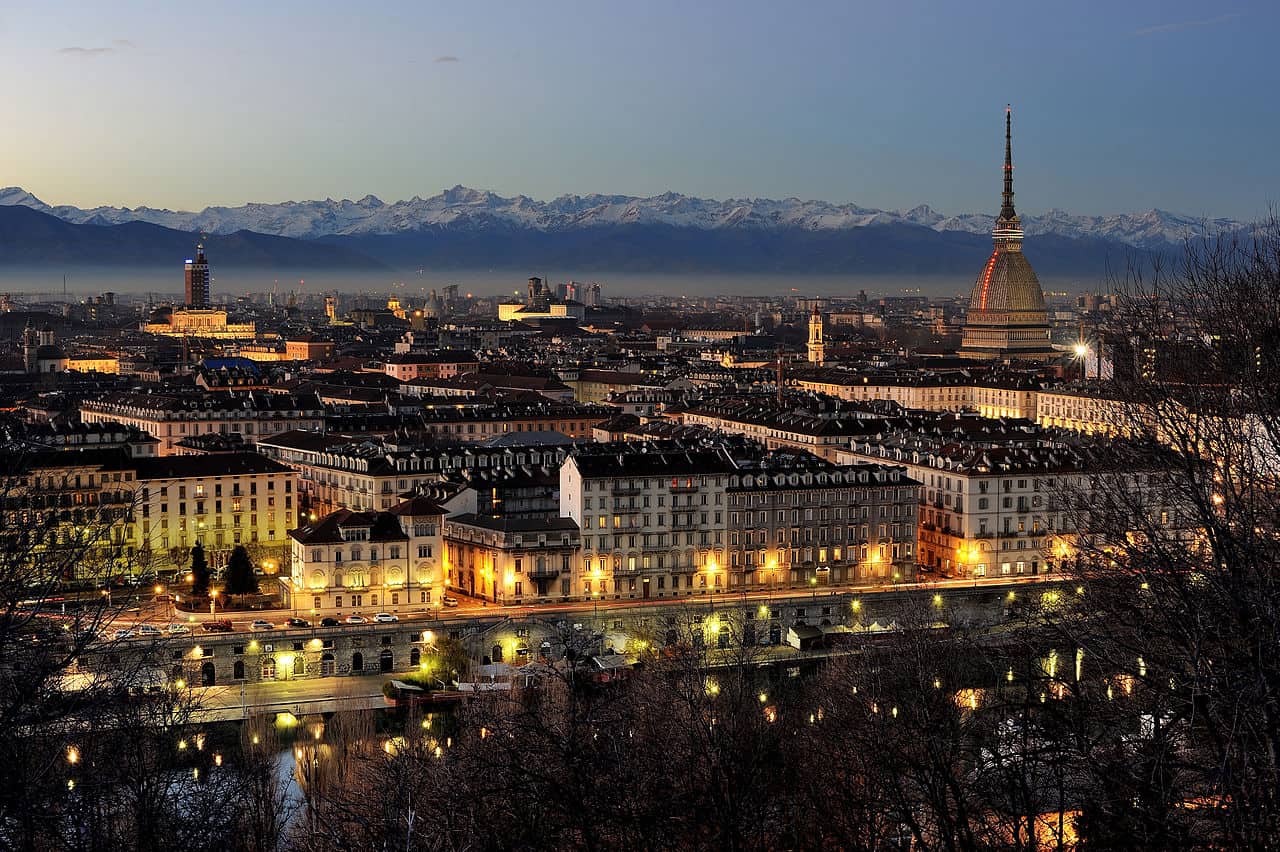
Turin is a charming combination of modernity and tradition.
Surrounded by the snow-capped Alps, Turin is an excellent destination for a winter trip, and a convenient base for reaching the ski resorts of the Via Lattea (such as Sestriere or Sauze d'Oulx).
The weather can be quite rough in December, but luckily the city’s 18km of arcades (the "portici"), covered walks and galleries offer shelter, shops and good food.
In December, tourists and local alike enjoys the "Luci d'Artista" event, an impressive light show with buildings and streets illuminated with sophisticated light artworks. The lights create a magical winter atmosphere that’s perfect for strolling and exploring the squares and the elegant city galleries.
We recommend a walking itinerary between the three main squares (Piazza Castello, Piazza San Carlo and Piazza Vittorio Veneto) so as to touch the main attractions of the city, such as the Duomo (where the "Holy Shroud" is housed), the Royal Palace, the Mole Antonelliana and the Galleria Subalpina.
If it gets too cold, then treat yourself to a regenerating break in one of the many cafes to sip the typical bicerin, a delicious drink made of coffee, chocolate and cream, or to taste the typical gianduiotto.
The selection of museums in Turin is wide: if you have little time, check out the Museum of Egyptian Antiquities (the second most important in the world after that of Cairo) and the National Cinema Museum, hosted in the Mole Antonelliana.
The traditional Piedmontese dishes go perfectly with the winter weather. Warm yourself up with the bagna cauda, literally translated as “hot bath”, a dipping sauce made of anchovies and garlic in which to dip raw or cooked vegetables (a fondue-style fork will help). Among the first courses, egg pasta is a classic (especially agnolotti and tagliolini), but so are polenta or risotto, often flavoured with truffles, an excellence of Piedmont.
For truffle lovers, the International White Truffle Fair takes place in Alba between October and December, making it a perfect "culinary excursion" if you are traveling to Turin, as the fair is just over an hour by train from the city.
You can read more about Turin in our article "Turin, what to do and see: a guide to the best attractions in the city".
3. Matera
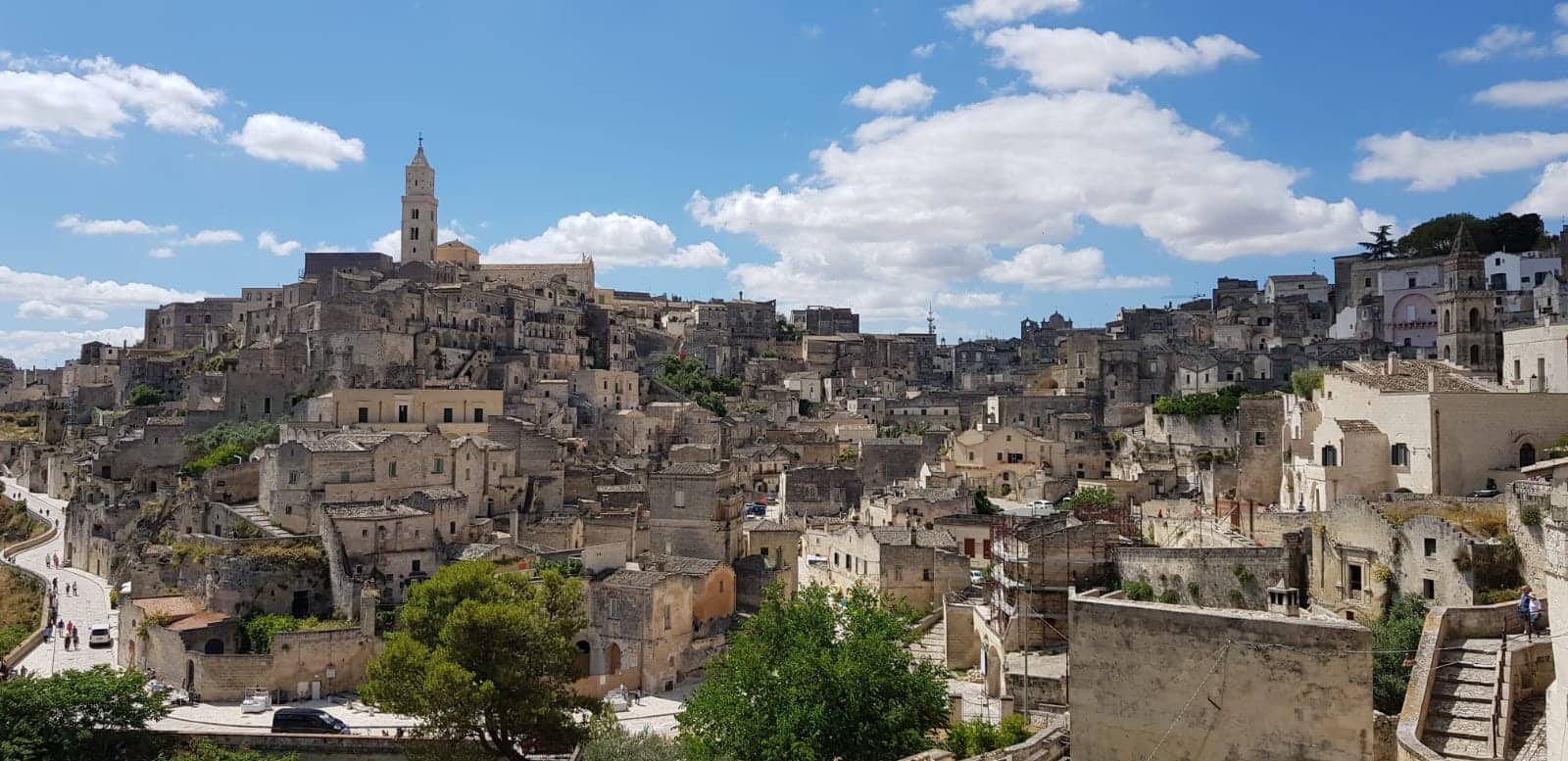
Matera is an open-air museum, a city carved into the rock that keeps its traditions very much alive.
In 1992, the UNESCO added Matera to the list of protected World Heritage Sites, boosting tourism in the area: the city is now loved by both Italian and foreigners, especially for the Sassi, the cave networks inhabited since the Palaeolithic age, and the evocative atmosphere of its rock churches. On top of this, Matera was the 2019 European Capital of Culture!
December is a great month to visit Matera, thanks to the mild weather and the “Presepe Vivente” (the “Living Nativity”), a spectacular event attracting visitors from all over Europe. Located in the Sassi district, the Nativity scenes come to life thanks to the works of many theatrical companies, reenacting scenes from the Nativity in this unique setting.
Among the many landmarks to visit in Matera, we recommend the marvellous Church of Santa Maria de Idris, the Palazzo Lanfranchi (housing the National Museum of Medieval and Modern Art), the historic houses (especially Casa Noha and Casa Grotta di Vico Solitario) and the huge underground cisterns under piazza Vittorio Veneto. And finally why not getting lost in the maze of cobbled streets and caves of the Sassi districts, a clear example of how locals needed to adapt to the difficult territory.
When hunger kicks in, pick one of the great restaurants carved into the tuff in the Sassi. The small region of Basilicata still relies on its farming traditions and this is reflected in the traditional dishes, simple and very tasty. The local products not to miss are olives, tomatoes, sausages, the delicious cheeses (like burrino and caciocavallo) and the wild vegetables (asparagus and the famous “cime di rapa”, or turnip greens).
Matera is best known for its bread, unique in flavour and shape: you will find it in every restaurant in the form of simple slices to accompany appetizers or as a “bruschetta”. If you visit the city in December, try the hot cialledda (a mix of crunchy stale bread and vegetables), orecchiette with turnip greens and “cruschi'' tomatoes, legume soups and strazzate (delicious crumbly biscuits).
Due to its intriguing and ancient look, Matera was chosen by many film directors as the main location for religious movies, acting as a perfect setting for Nazareth or Jerusalem. From Pasolini (“The Gospel according to Matthew”) to Mel Gibson (“The Passion of the Christ”), many directors fell in love with the peculiar urban layout of Matera.
The best way to reach Matera is by car. The train station is located 40 km outside the city, at Ferrandina Scalo. The nearest airport is Bari (70 km, where you can take a bus to Matera).
For more information on what to do in Matera, check our article "Matera: what to see in 1, 2 or 3 days".
2. Merano
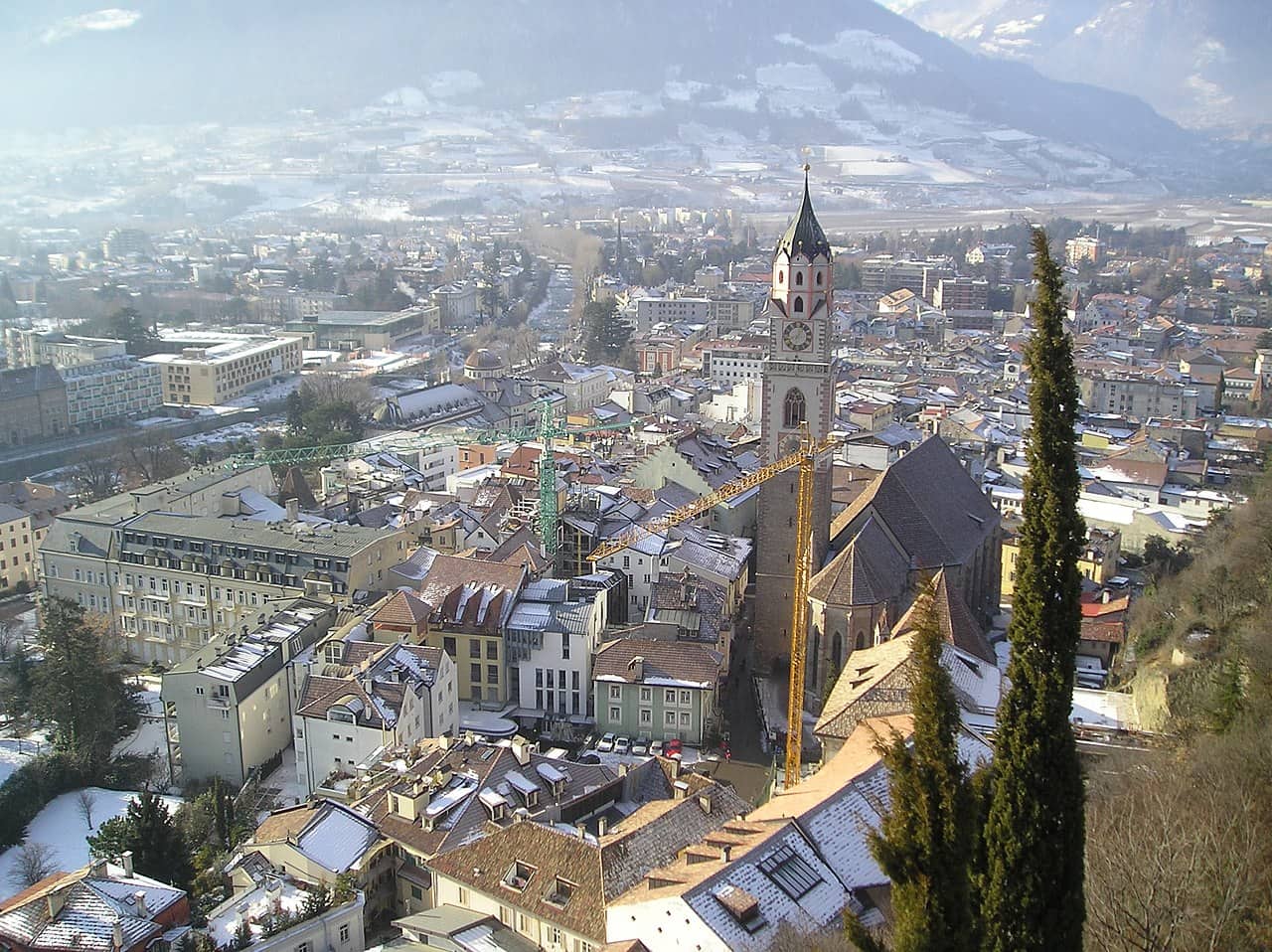
A paradise for wellness and winter sports lovers: this is the sophisticated Merano, the second city of South Tyrol.
Merano benefits from a strategic position at the foot of the Alps - at the crossroads of four valleys and two rivers (the Adige and the Passirio) - making it the ideal base for exploring the Alps in December and combining wellness and gastronomy, with a refined “Mittel-European” touch. Merano was in fact under Austrian domain for hundreds of years.
Among the things to do, you should check out the vibrant Christmas market of Merano, one of the best in Italy (there’s also an ice-skating rink), the thermal baths and the Gardens of Trauttmansdorff Castle, once the holiday place of Empress Sissi of Austria.
We recommend visiting the historic centre, perfect for some shopping under the ancient arcades. Put on some nice clothes and stroll around the avenue running along the Passirio river, take a picture of the Kurhaus, the city's main Art Nouveau building, and then dive into the lively Corso Libertà. To reconnect with Mother Nature, follow the signs for the “passeggiata Tappeiner”, a 6 km scenic path taking you around and over the city, offering a beautiful panoramic view. Finally, visit the Frauenmuseum (the “women's museum”) where you can learn about different eras of female history.
The Merano Thermal Baths are a must-do for tourists. The building has a fantastic cube-shaped design, built with a particular mix of glass, metal and wood: refreshing for the body and the eyes. Enjoy a day of relaxation in the spa and fitness centre, or swim in the hot indoor and outdoor pools: winter has never been this warm.
Merano is tailor-made for snow lovers as the skiing season here starts in mid-December. Just a 10-minute drive from the city, you can find Merano 2000, a ski area with 40 km of slopes for alpine skiing, ticking all the boxes of snow enthusiasts. Merano 2000 also offers cross-country skiing and toboggan tracks (the Piffing-Falzeben track and the Alpin Bob rail track). Other places to consider are Monte San Vigilio and the Schwemmalm area in the Val d’Ultimo, suitable for expert skiers.
The rich South Tyrolean cuisine is a perfect fusion of Mediterranean and German. Traditional winter dishes are a must-try, such as canederli (large dumplings to try in broth), smoked pork knuckle with sauerkraut and potatoes, and spätzle with cheese fondue and fried onion. Wash them down with local craft beers (try a glass of Forst) and renowned wines, such as Gewürztraminer. At the end of the meal, let yourself go with a shot of grappa, a true Tyrolean specialty. You can also appreciate the Mittel-European influence on the desserts: true gourmands will not miss the delicious sacher cake, krapfen and apple strudel. Finally, look for apples and berries in the local food markets, you won’t find any better anywhere else!
Merano is well connected to Bolzano thanks to the Autostrada (the “highway”, about 30 minutes by car) and the train. The closest airport is Verona, just a 2-hour drive away.
Finally, if you feel like exploring this city like a local, read our guide.
1. Florence
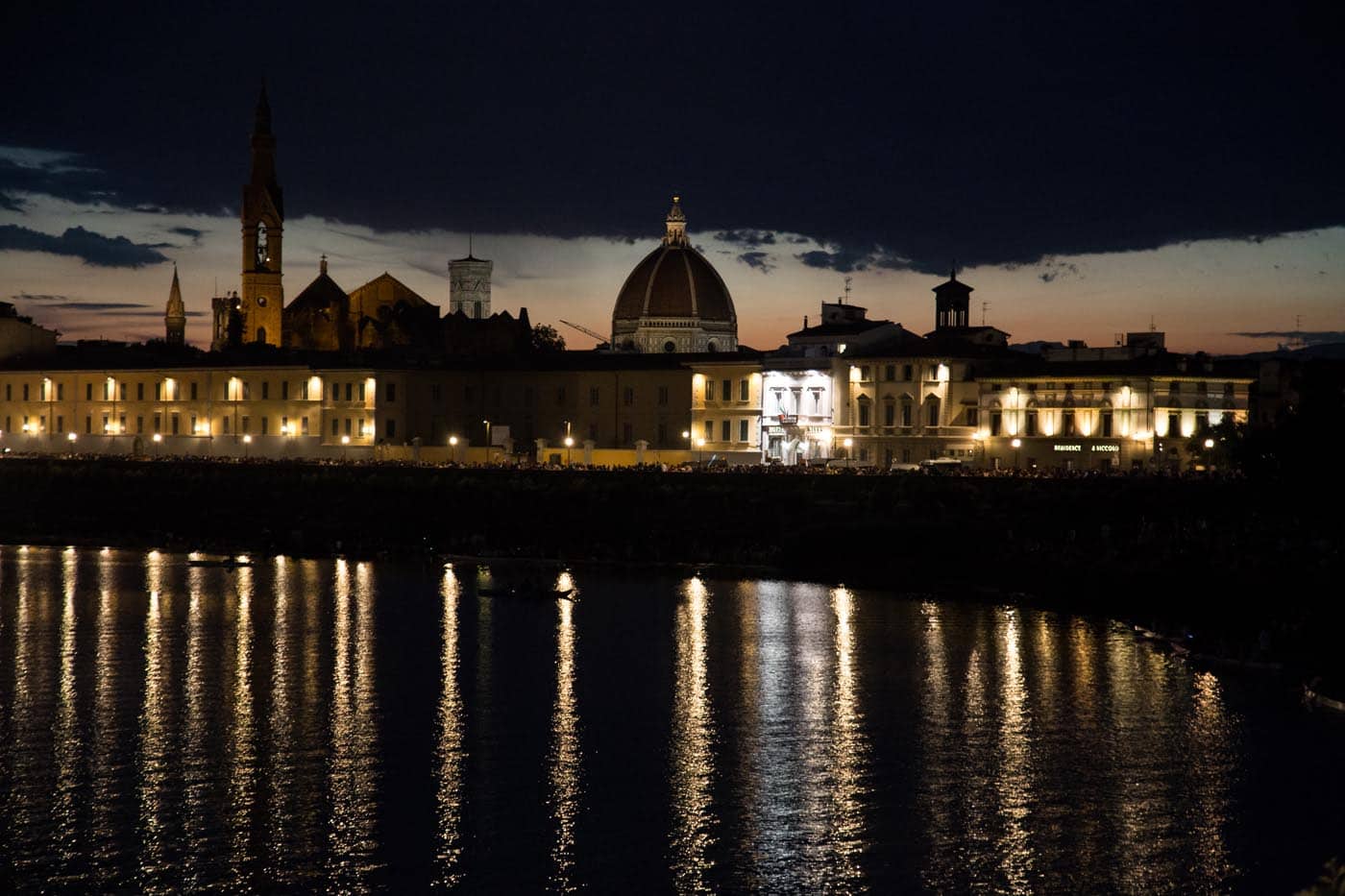
Florence is the perfect destination for a long weekend in December.
The city is lit with Christmas lights and the temperature (6-8 degrees on average) allows one to explore the historic centre without too many problems.
Thanks to the moderate number of tourists, December is a good time to avoid the long lines and visit the city museums (in particular the Uffizi and the Accademia Gallery) or the sumptuous palaces in the centre, such as Palazzo Vecchio and Palazzo Pitti.
Your winter itinerary should start from Piazza del Duomo, where you can admire the famous cathedral and the imposing Brunelleschi's Dome (attention, the dome and the cathedral are two separate reservations), Giotto's Bell Tower and the Baptistery. If you are in a hurry and want to get some steps in and enjoy a wonderful panoramic view of the historical centre, then climb either the Dome (463 steps) or Giotto's bell tower (398 steps).
If you love the Christmas atmosphere, do not miss the Santa Croce Christmas market, or the Christmas tree and the living nativity in Piazza del Duomo. For some Christmas shopping, visit the shops and boutiques along via de’ Tornabuoni and via dei Calzaiuoli, beautifully decorated with festive lights.
In terms of cuisine, the cold weather brings some valid winter additions to restaurant menus. Along with the food staples (Florentine steak, lampredotto, pappardelle with wild boar) you can try traditional winter soups: get a ribollita (a hearty potage made with cabbage and beans) or a filling portion of pappa al pomodoro (tomato, bread and basil soup).
Take a break from the cold temperature with a hot drink in two of the best chocolate shops in the city: Caffè Gilli, a real institution that in the past was a meeting place for writers and artists, and Caffè Rivoire in Piazza della Signoria.
Florence is connected by two airports (Pisa and Florence Peretola) and has a huge choice of hotels and B&Bs, thus being a great Italian destination for the month of December.
About the author
Written on 09/11/2021

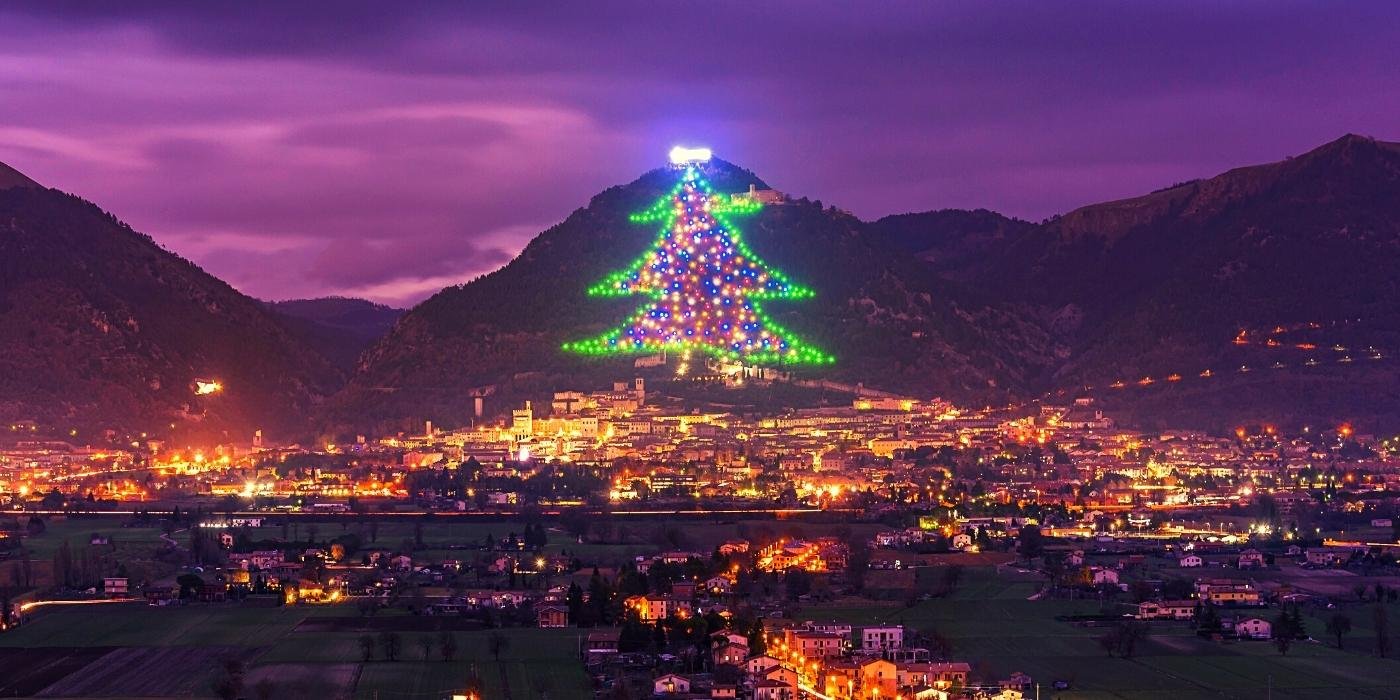

Fabrizio Mariani
Travelling to Italy in December offers a unique set of experiences and destinations to choose from: art cities, museums, Christmas markets, top-notch ski resorts and much more. VisitItaly selected 5 destinations for a perfect Italian winter trip, between traditional foods, history and unmissable events.